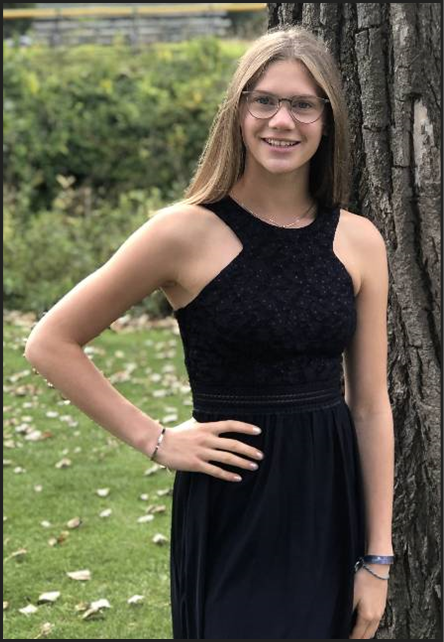Foreign Exchange Students take on America
Senior Jule Hattig before MHS’ Homecoming dance
December 20, 2019
Traveling abroad can be a life-changing experience for many college students, as it has both fun and educational purposes while encompassing the importance of understanding the culture of another place.
However, some students decide to take on this challenge even sooner and leave behind their homes for a new, lively take on high school as a foreign exchange student.
These students apply their knowledge and past experiences to learn about the exciting world outside their home country’s borders, courageously making memories in an entirely new realm. Jule Hattig, a senior from Germany, is one of these students who left her home country in hopes of meeting new people and “Living my American high school dream.”
Hattig’s process of coming to a new country was similar to many others. She had to fill out multiple applications, go to many doctor’s appointments, attend a seminar to learn etiquette and other useful information, and communicate with her organization regularly for updates. Her adventure began when she stepped onto the plane, and then set foot in the United States for the first time.
As a member of MHS’ girls swim team, she quickly adapted to the welcoming environment of the student body and staff at Milford High School. Hattig described her first few weeks, especially during Homecoming, when she said, “It felt like in a high school movie!”
Like most foreign exchange students, she was looking forward to new social opportunities; however, Hattig had a variety of reasons for choosing to come here. She further added, “Seeing the world and educating yourself the best you can” and “Having the opportunity to compare two lives” as other reasons for her choice.
Sophia Mora Lopez, a senior from Columbia, came to the United States for similar reasons. She said she wanted to become fluent in English and “Learn new cultures and be in another country.” Cots Tardiv, a sophomore from Catalonia, Spain, said she wanted to, “Try new things: new holidays, new food, new activities, experiences, and a new life.” Furthermore, Senior Sophie Harris, from Sweden, added, “I have always been interested in different cultures and thought this would be a perfect opportunity to experience something totally different.”
Immediately, all four students noticed staunch differences in everyday life, mainly in terms of food, public settings, schools, and people.
For instance, Lopez said her favorite thing about MHS was, “The cafeteria, it’s big–I like it,” while Tardiv said, “I love the school spirit… even the fact that you have morning announcements is cool!”
Harris also saw the unique atmosphere that Milford has to offer: “I fell in love with the school during the first football game. I’ve never experienced the school spirit MHS has.” Additionally, both Hattig and Lopez discussed the nature of Americans versus those from their native countries. Lopez stated, “[at home, I heard] that [An American is] a ‘cold’ person, and not that friendly,” in which she later commented that it had proven to be untrue thus far.
Hattig briefly discussed how she too had been embraced by friendly people upon her arrival and was grateful for her shift in attitude once she started school here. Finally, Tardiv, Harris, and Hattig agreed that the scale of all things in the U.S. is larger: “Everything is big–very big: the houses, the stores, MHS… everything is bigger than the things back home,” said Tardiv.
Most of the students’ surprises have added positive value to each of their unique experiences at MHS so far, but others were more alarming. From colder weather, varying difficulties of classes, and even political statements made within the walls of the school, each of the girls have learned to view others’ perspectives and adapt, expressing interest in each part of distinct societal dissimilarity.
One interesting observation has left Hattig wondering about a primary factor in youth culture here, both at MHS and in the United States overall. In Germany, the education system is much more structured and firm, ensuring that students enter the workforce with the proper knowledge prior to the first day on the job or in another classroom.
She recognizes that she has not yet faced American midterms, finals, or other rigorous parts of the American education system, but was surprised by the sizeable contrast between each country’s courses so far. “Americans live in their own bubble… I was shocked at how little children my age know about politics,” Hattig said.
One thing that all four students had in common was their desire to learn. All of them are passionate about grasping every new opportunity to speak with others and compare and contrast characteristics of their homes with their host country, as well as seeking adventures to obtain knowledge on what exists beyond the borders of a single country.
Tardiv summed it up perfectly as she stated, “I wanted to be an exchange student to learn–to learn from everything, and everyone.”
